We found what my husband called a 'legless lizard' this afternoon - actually the lawn mower found it  It seems ok and looks like all of the damage is on a new re-grown tail end. The very tip is cut off and a chunk taken out (not a clean slice). I would like to keep it for a bit to make sure it is ok and also just study it for a while.
It seems ok and looks like all of the damage is on a new re-grown tail end. The very tip is cut off and a chunk taken out (not a clean slice). I would like to keep it for a bit to make sure it is ok and also just study it for a while.
I would like to know a few things and also confirm that it is a Anomalopus Verreauxii or Three-clawed worm-skink. I'm pretty sure it is but it was found in Mackay QLD and the only distribution map I can find shows that it is not found quite so far North? However with all of the floods and constant rain and weird weather we have had in the last 6 months who knows where anyone else lives anymore? Also it's head is all dark and it doesn't seem to have the lighter 'band' although it does have a slightly lighter patch underneath it's head? I know that they get darker as they get older but thought that they still had a bit of distinction?? And this one seems not full grown yet, a small adult maybe? It does have 3 toes on it's front legs and none on it's back... hence why I think it is a Verreauxii.
Next: Should I clean the wound at all? We have kept reptiles and a multitude of other pets for years and currently have 2 snakes, a turtle, a bird and a fish but the only time any of the reptiles needed any sort of treatment was when our Short necked Murray turtle scrapped it's nose on something. We were advised to put Betadine antiseptic on it and it worked fine. Not sure if it would be the same for a lizard though?? Any ideas?
It is being kept in some fresh grass clippings right now. Is this ok? I assumed it was because it came out of that grass.
I would also like to know what these little guys eat and how to feed them? I understand insects and worms are the way to go but I have never fed something so small. I do have a compost worm farm, would the smaller baby worms be ok?
He has an old injury (I'm presuming that's what it is) on his head and he can't open one eye, but the other seems to be functioning properly. I can see where his eye is (or was), but it is closed tightly and looks like it is fused shut. So I have a bit of a soft spot for this little one - he looks like he has had a hard life! Plus I have wanted a pet skink for sooo long!
What other care advice/instructions can you give me about these tiny wonders?
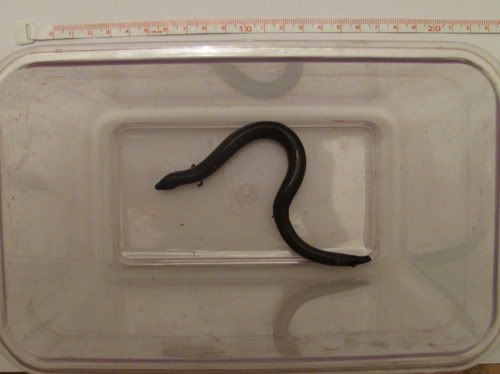
Full length shot. The container is about 20cm long
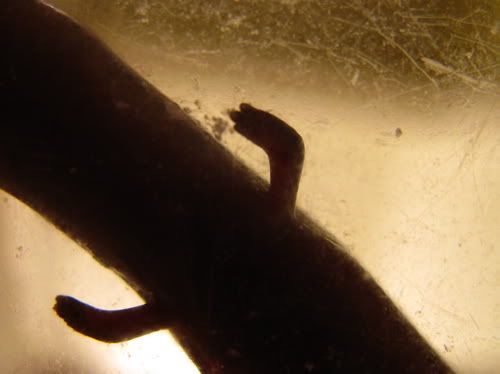
Front legs. You can see the 3 toes clearly
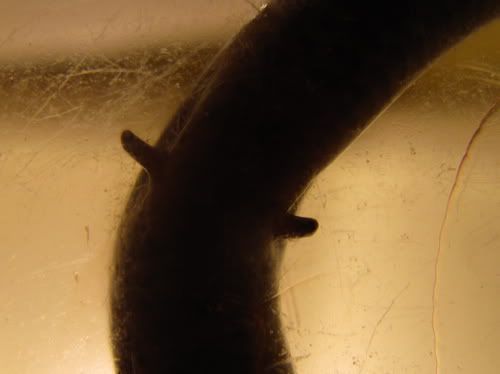
Back legs. No toes, just stubs
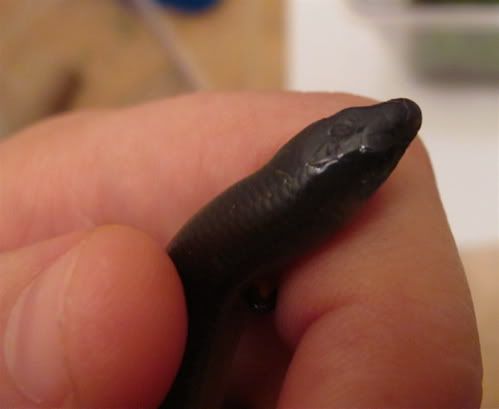
Head

Head. You can see the old wound on top of his head and it's his left eye that doesn't open but not sure if they are related?
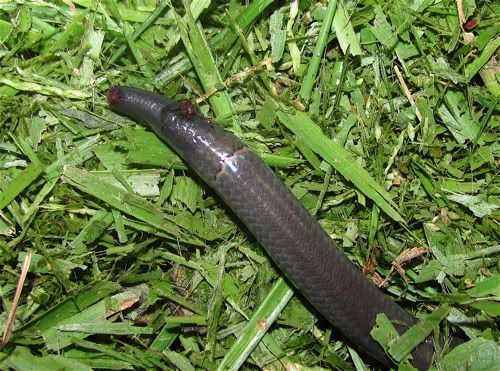
Tail wound. The cut goes underneath too but you can see that all of the damage is on the new tail growth. Can they grow their tails back an unlimited amount of times?
I would like to know a few things and also confirm that it is a Anomalopus Verreauxii or Three-clawed worm-skink. I'm pretty sure it is but it was found in Mackay QLD and the only distribution map I can find shows that it is not found quite so far North? However with all of the floods and constant rain and weird weather we have had in the last 6 months who knows where anyone else lives anymore? Also it's head is all dark and it doesn't seem to have the lighter 'band' although it does have a slightly lighter patch underneath it's head? I know that they get darker as they get older but thought that they still had a bit of distinction?? And this one seems not full grown yet, a small adult maybe? It does have 3 toes on it's front legs and none on it's back... hence why I think it is a Verreauxii.
Next: Should I clean the wound at all? We have kept reptiles and a multitude of other pets for years and currently have 2 snakes, a turtle, a bird and a fish but the only time any of the reptiles needed any sort of treatment was when our Short necked Murray turtle scrapped it's nose on something. We were advised to put Betadine antiseptic on it and it worked fine. Not sure if it would be the same for a lizard though?? Any ideas?
It is being kept in some fresh grass clippings right now. Is this ok? I assumed it was because it came out of that grass.
I would also like to know what these little guys eat and how to feed them? I understand insects and worms are the way to go but I have never fed something so small. I do have a compost worm farm, would the smaller baby worms be ok?
He has an old injury (I'm presuming that's what it is) on his head and he can't open one eye, but the other seems to be functioning properly. I can see where his eye is (or was), but it is closed tightly and looks like it is fused shut. So I have a bit of a soft spot for this little one - he looks like he has had a hard life! Plus I have wanted a pet skink for sooo long!
What other care advice/instructions can you give me about these tiny wonders?

Full length shot. The container is about 20cm long

Front legs. You can see the 3 toes clearly

Back legs. No toes, just stubs

Head

Head. You can see the old wound on top of his head and it's his left eye that doesn't open but not sure if they are related?

Tail wound. The cut goes underneath too but you can see that all of the damage is on the new tail growth. Can they grow their tails back an unlimited amount of times?
Last edited:



